|
READERS' MEMORIALS IN EARLY EDITIONS OF CHAUCER
| ||

READERS' MEMORIALS IN EARLY EDITIONS OF CHAUCER
by Hope Johnston
CHAUCER'S early and enduring fascination among english readers has become a source of interest in itself among modern critics. The foundation for studies of Chaucer's reception is Caroline Spurgeon's classic Five Hundred Years of Chaucer Criticism and Allusion, which gathers quotations concerning him from the late medieval period through the end of the nineteenth century.1 In more recent years, book historians have turned to evidence from medieval manuscripts and early printed books. Alexandra Gillespie provides a thoughtful study of how printers crafted the idea of Chaucer as Author through their decisions about the presentation of his texts.2 Alison Wiggins considers how readers used their early printed books by examining the annotations found in her survey of fifty-four surviving black-letter copies.3
This essay will consider how individuals took printed books and re-crafted them in ways that reflect the high cultural status accorded to Chaucer. Intentional alterations made by book owners to their sixteenth-century editions of Chaucer include memorial inscriptions, title-page embellishments, and portraits inserted as frontispieces. Owners personally mended, emended, and augmented books, and in so doing, they memorialized Chaucer as well as his corpus of writing. Their active engagement with books as physical objects offers a new approach

Memorial Inscriptions And Heraldry
Seth Lerer argues that classical eulogies composed for Chaucer were meant not just to perpetuate his memory but to liberate writers from his shadow by putting him firmly in his grave.4 This literary gesture took physical form when Nicholas Brigham commissioned a marble monument ca. 1556 commonly referred to as "Chaucer's Tomb," giving Chaucer a place in Westminster Abbey among the prelates and kings of England's past.5 It created a public locus for Chaucer's national importance, as Thomas A. Prendergast has noted, yet the duration of memory bound up in the memorial would have been largely symbolic during the sixteenth century.6 Variations among the versions of the Latin epitaph on Chaucer's tomb testify that the exact wording was not set in stone but took on its own life, as Joseph A. Dane shows in his study of the tomb verses.7 Readers participated actively in the memorial process by inscribing verses from the monument in early printed copies of his writing. Rather than circumscribing Chaucer's reach by marking his death, elegiac verses continued to draw interest from readers who turned the pages of his writing over the centuries.
The ideological association of tome and tomb is a topic that has interested a number of critics in recent years. Scholars have been reporting discoveries of the Westminster Abbey epitaph in twos and threes, mostly bringing these to light serendipitously while pursuing other projects. Joseph A. Dane and Alexandra Gillespie first called attention to the epitaph phenomenon with examples at the Huntington Library and the University of Texas Harry Ransom Center.8 Alison Wiggins documents three more examples from the Cambridge University Library and the Folger Shakespeare Library, and Arnold Sanders reports two more

| Edition Year | Location | STC, rev. ed |
| 1532 | Folger Shakespeare Library (STC 5068 copy 1) | 5068 |
| 1532 | Texas, Harry Ransom Center (PR 1850 1532 copy 2) | 5068 |
| ca. 1550 | State Library of South Ausralia (RBR 821.C496b) | [acephalous] |
| ca. 1550 | Folger Shakespeare Library (STC 5071) | 5071 |
| ca. 1550 | John Rylands Library (Special Collections 21316) | 5071 |
| ca. 1550 | Huntington Library (RB #99584) | 5072 |
| 1561 | Cambridge University Library (Syndics 2.56.2) | 5075 |
| 1561 | John Hopkins University (PO 1850 1561 Quarto) | 5075 |
| 1561 | Texas, Harry Ransom Center (PR 1850 1561 copy 2) | 5076 |
| 1561 | John Hopkins University (PO 1850 1561a Quarto) | 5076 |
| 1561 | Pembroke College, Cambridge (LC.l.17) | 5076 |
Other inscriptions achieve a similar end, whether combined with the Latin epitaph or in lieu of it. Rare Book Librarian Kyle R. Triplett has discovered lines from William Camden's Britannia in a copy of the 1561 Woorkes at the New York Public Library on the verso of a parchment title page (figure 1).10
Camden's quotation is featured more prominently than the tomb epitaph in Speght's 1598 edition, and Camden's name would carry a high recognition value for Elizabethan readers. The popularity of his Britannia can be measured by the fact that it went through six editions between 1586 and 1607. In 1610 George Bishop and John Norton printed an English translation by Philemon Holland, who translates Camden's passage on Chaucer liberally:11
For, hee surpassing all others without question in wit, and leaving our smattering Poet-asters by many degrees behind him:
Ridet anhelantem dura ad fastigia turbam.
When once himselfe the steepe hill top had woone,
At all the sort of them he laught anone

Puffing and blowing doe clamber vp in vaine.
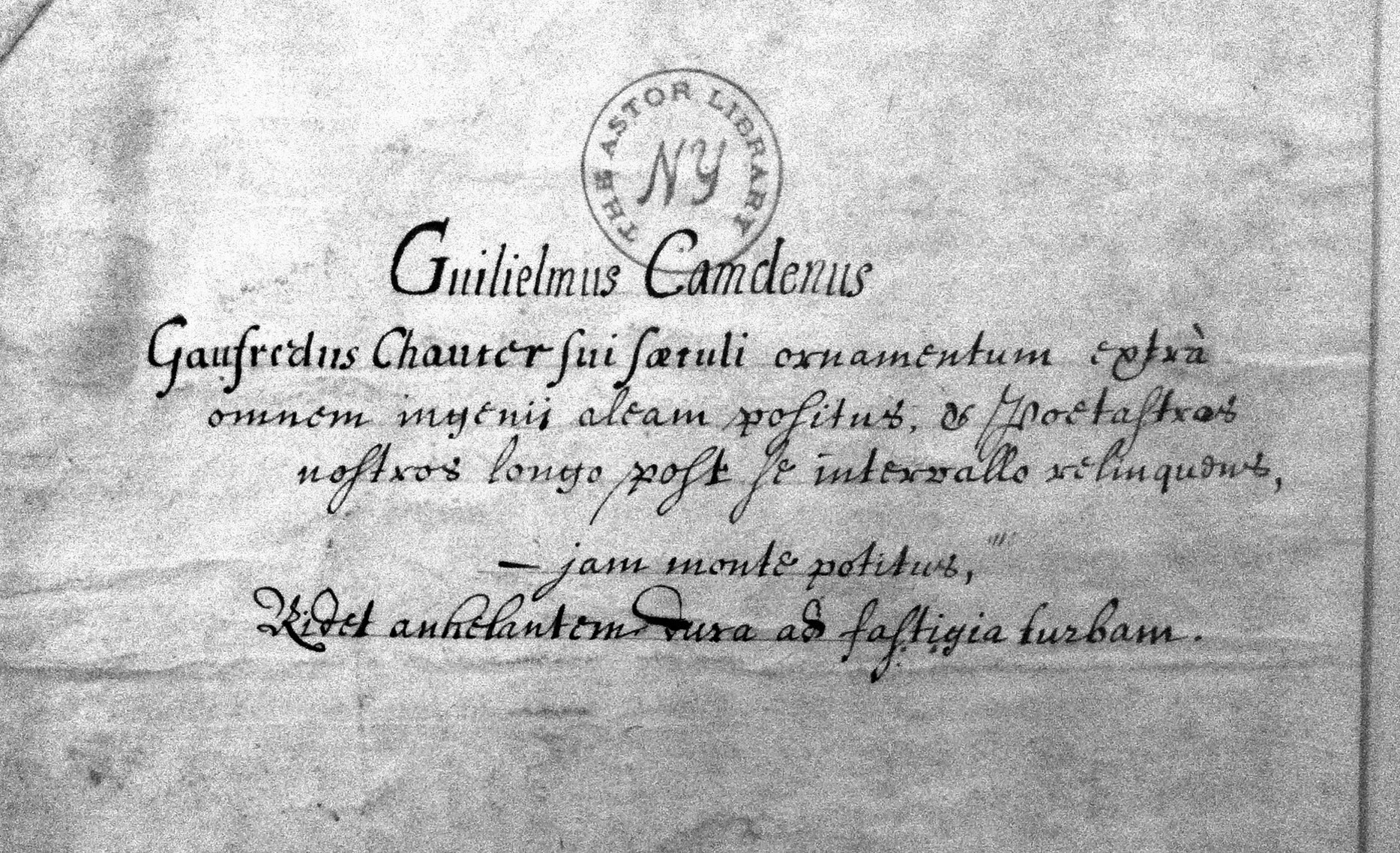
FIGURE 1. Title page verso, Stow's Woorkes (1561). Rare Book Division, New York Public Library, Astor, Lenox, Tilden Foundations (*KC + 1561).
"The learned Italian" mentioned obliquely by Camden as the author of the Latin verse is the humanist Angelo Poliziano (1454–94). Speght therefore deals out a double dose of intellectual gravitas in the quotation from Camden's Britannia, who cites an Italian humanist in turn. The annotator's decision to inscribe the Camden passage on the title page verso of Stow's 1561 Woorkes participates in a pattern of literary witnessing that goes beyond variations of the tomb verses. Indeed, the last two Latin lines quoted from Camden's Britannia are inscribed on the title page of a 1602 edition at Trinity College Dublin (R. bb. 24) that belonged to Archbishop James Ussher (1581 –1656), and it would not be surprising if future research finds Camden cited by readers in other copies.
Memorial quotations in several cases occur in combination with each other. Dane and Gillespie observe that the tomb verses in the Huntington Library copy appear with an untraced Latin distich, "Chaucer occubuit sed corpore, cetera magnis | post cineres virtus vincere sola facit" [Chaucer is dead, but his spirit lives on], which they suggest might have been composed by the owner.12 Another early owner selects lines from the writings of Tiberius, Horace, Virgil, and Cicero to accompany the Latin epitaph in a copy of the 1561 edition at Pembroke College, Cambridge (figure 2):
Gualfridus Chaucer conditur hoc Tumulo;
Annum si quæras Dominj si tempora mortis,
Ecce notæ subsunt, quæ tibj cuncta notant

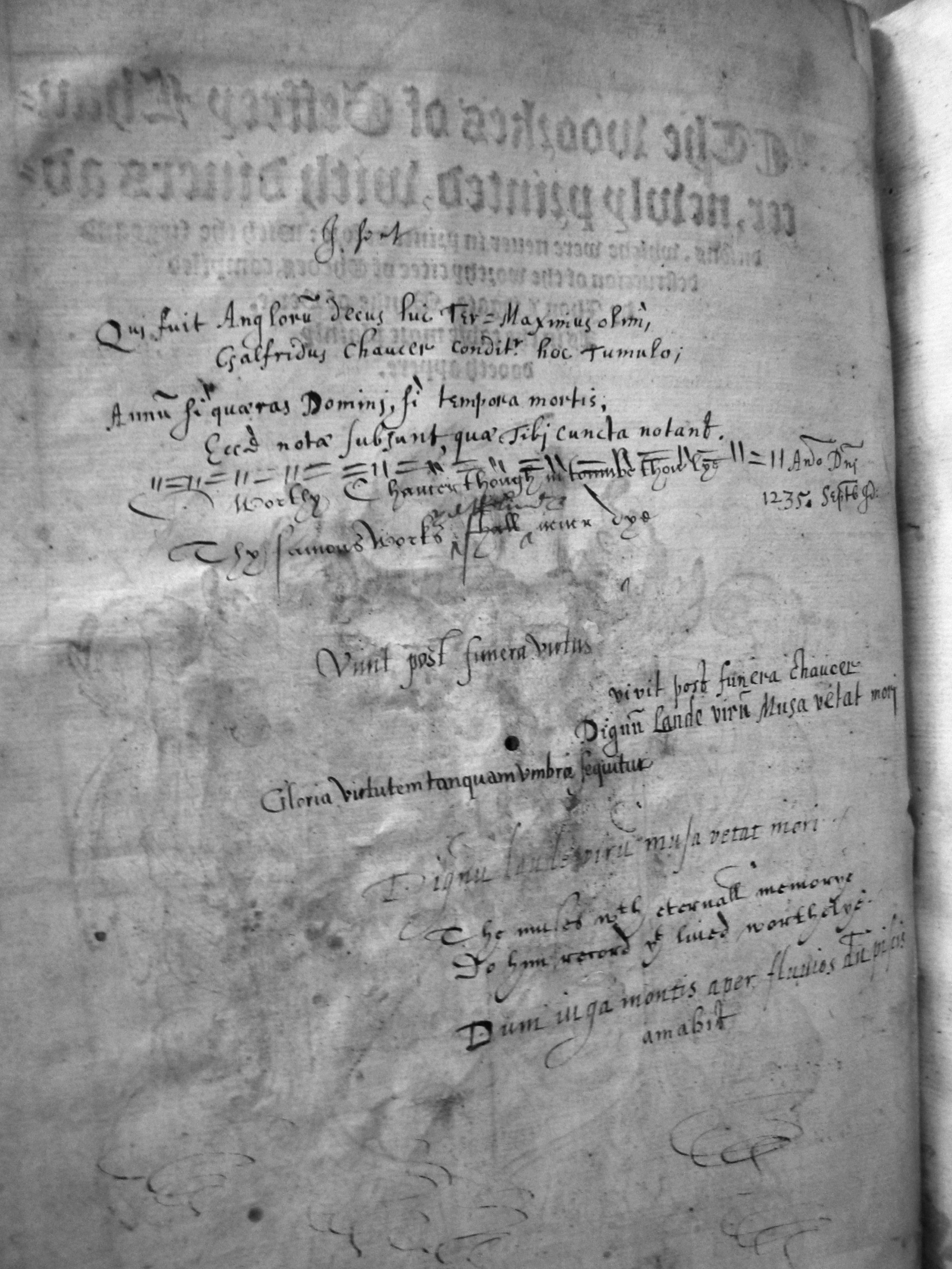
FIGURE 2. Title page verso, Stow's Woorkes (STC 5076, 1561). By permission of the Master and Fellows of Pembroke College, Cambridge (LC.1.17).

The substitution of "decus lui" for "vates" appears to be unique among the variants recorded by Dane. An English couplet below this, in a secretary hand, reads: "O worthy Chaucer though in toumbe thow lye | Thy famous works shall neuer dye." Other quotations follow:
The first quotation from Tiberius, "viuit post funera virtus" [virtue lives on after the grave], appears twice, reformulated the second time as "vivit funera chaucer" and paired with a quotation from Horace's Odes: "Dignum Laude virum Musa vetat morj" [the muse forbids the man who is worthy of praise to die], which Thomas Speght quotes in his introduction to Chaucer's Works (1598). The English verses provide a translation: "The muses with eternall memorye | do hym record that liued worthelye," and lines from Virgil's Fifth Eclogue measure eternity: "Dum iuga montis aper, fluvios dum piscis amabit" [as long as the boar shall love the mountain height, as long as the fish the rivers]. One more contribution is carefully lettered in a distinct humanist hand, citing Cicero: "Gloria virtutem tanquam vmbra sequitur" [Glory follows virtue as if it were its shadow]. While the Latin epitaph in Westminster Abbey emulates the style of classical writers, here readers concatenate phrases by classical authors interspersed with English verse for an English author, creating a common-place book of tributes in an uncommon way.
Another example of multi-layered quotations appears in a copy of Thynne's 1542 edition at the British Library with three passages that all seem to be the handiwork of the antiquarian Thomas Martin (1687–1771) (figure 3).13 His note about the book's local history is consistent with his interest in Norfolk antiquities:

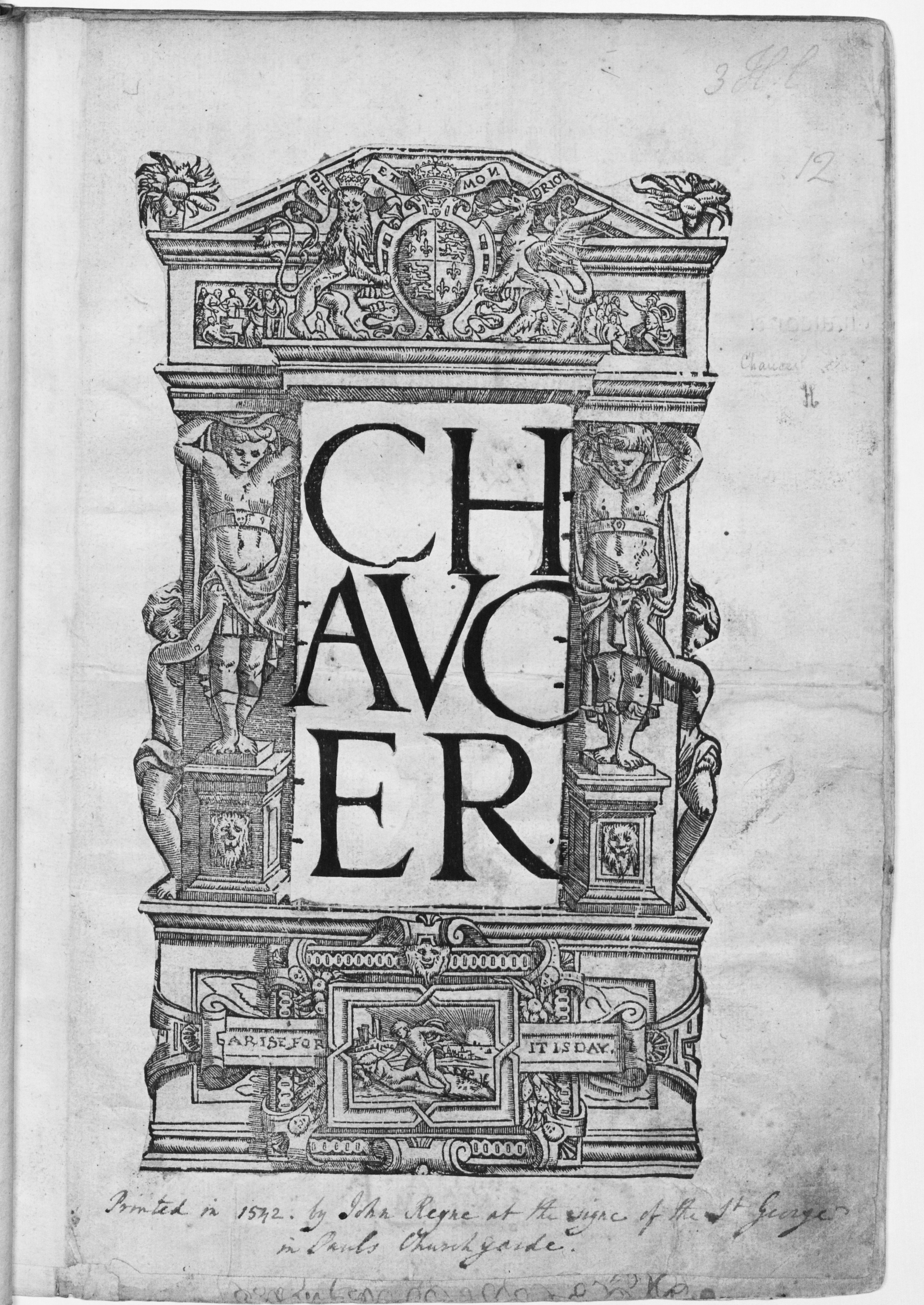
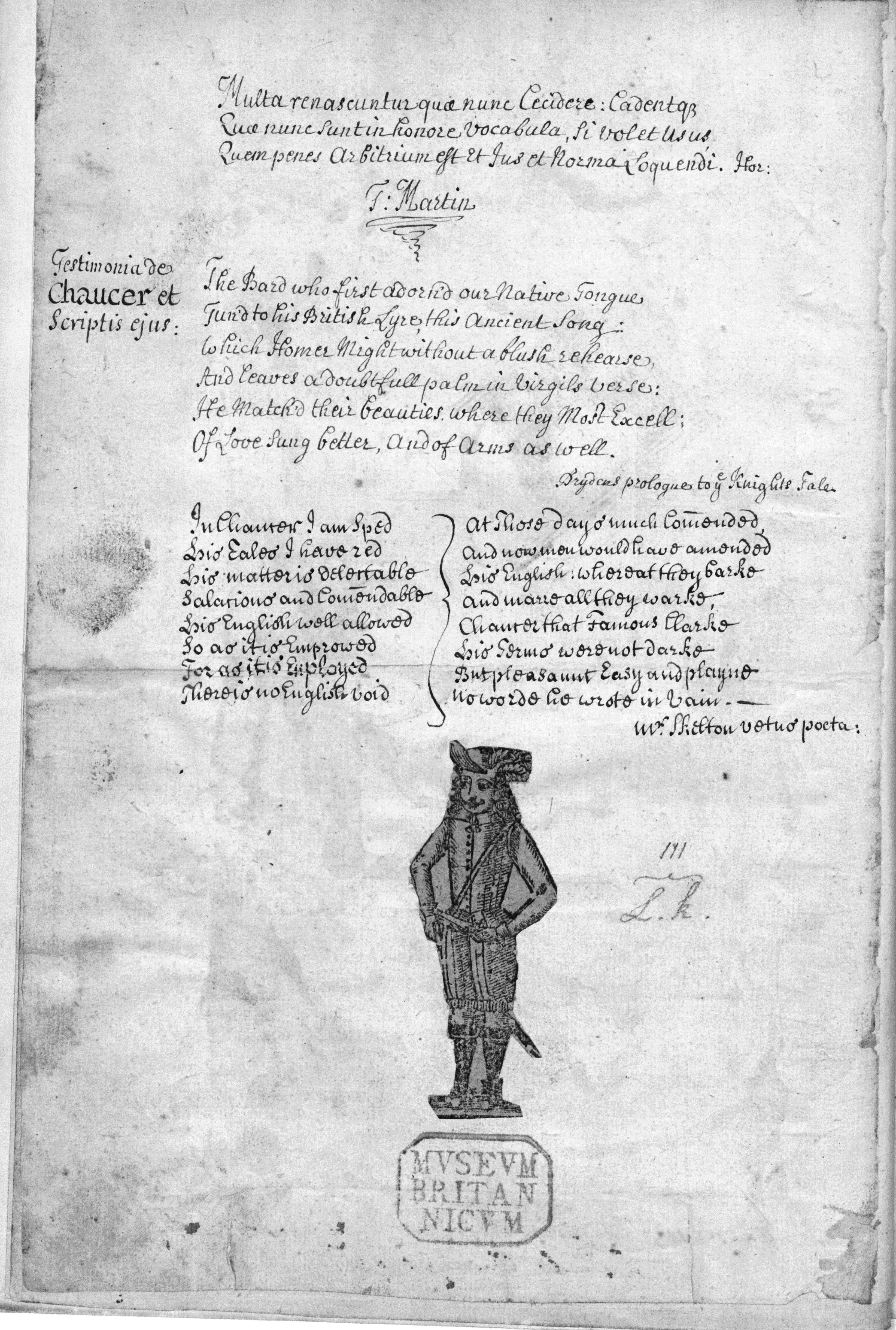
FIGURE 3. Title page recto and verso, Thynne's second edition (STC 5070, 1542). © British Library Board (C.57.g.6).

He does not look to Nicholas Brigham for memorial verses but to a contemporary publication, John Dryden'sFables, Ancient and Modern (1700). The first quotation copied on the page is from Horace's Ars Poetica, which Dryden quotes in his introduction as a rationale for translating Chaucer's verse: "Multa renascuntur qus nunc cecidere: cadentque | Quæ nunc sunt in honore vocabula, si volet usus | Quem penes arbitrium est et jus et norma loquendi" [ Many words shall revive, which now have fallen off; and many which are now in esteem shall fall off, if it be the will of custom, in whose power is the decision and right and standard of language].15 The inscription attests to the appeal of lines by an ancient poet, even though Chaucer's Middle English had become sufficiently foreign by the end of the seventeenth century that Dryden argues for the expediency of modernizing the text. Martin appears to appreciate Dryden's reverence for Chaucer, copying his panegyric verses in the center of the leaf, glossed with deliberate care as "Testimonia de Chaucer et scriptis ejus:"
Tun'd to his British Lyre, this Ancient Song:
Which Homer Might without a blush rehearse,
And leaves a doubtful palm in Virgils verse:
He Match'd their beauties where they Most Excell;
Of Love Sung better, And of Arms as well.
Drydens prologue to the Knights Tale
Martin pens the words in a careful hand that strives toward formality, but the quotation from John Skelton's "Philip Sparrow" is in the same hand as the provenance note:
His Tales I have read:
His matter is delectable,
S[o]lacious, and commendable;
His English well allowed,
So as it is enprowed,
For as it is employed,
There is no English void
At those days much commended;
And now men would have amended
His English, whereat they bark,
And mar all they wark.
Chaucer, that famous clerk,
His termes were not dark,
But pleasant, easy, and plain;
No word he wrote in vain.
Where the poem should read "solacious," Martin writes "salacious," which conveys a quite a different sentiment from solicitousness – though arguably still true. Certainly the jaunty little woodcut man pasted at the bottom of the page seems less inclined to lugubrious mourning than to reveling in Chaucer's more boisterous tales. The owner-crafted title page turns commemoration into a vivacious

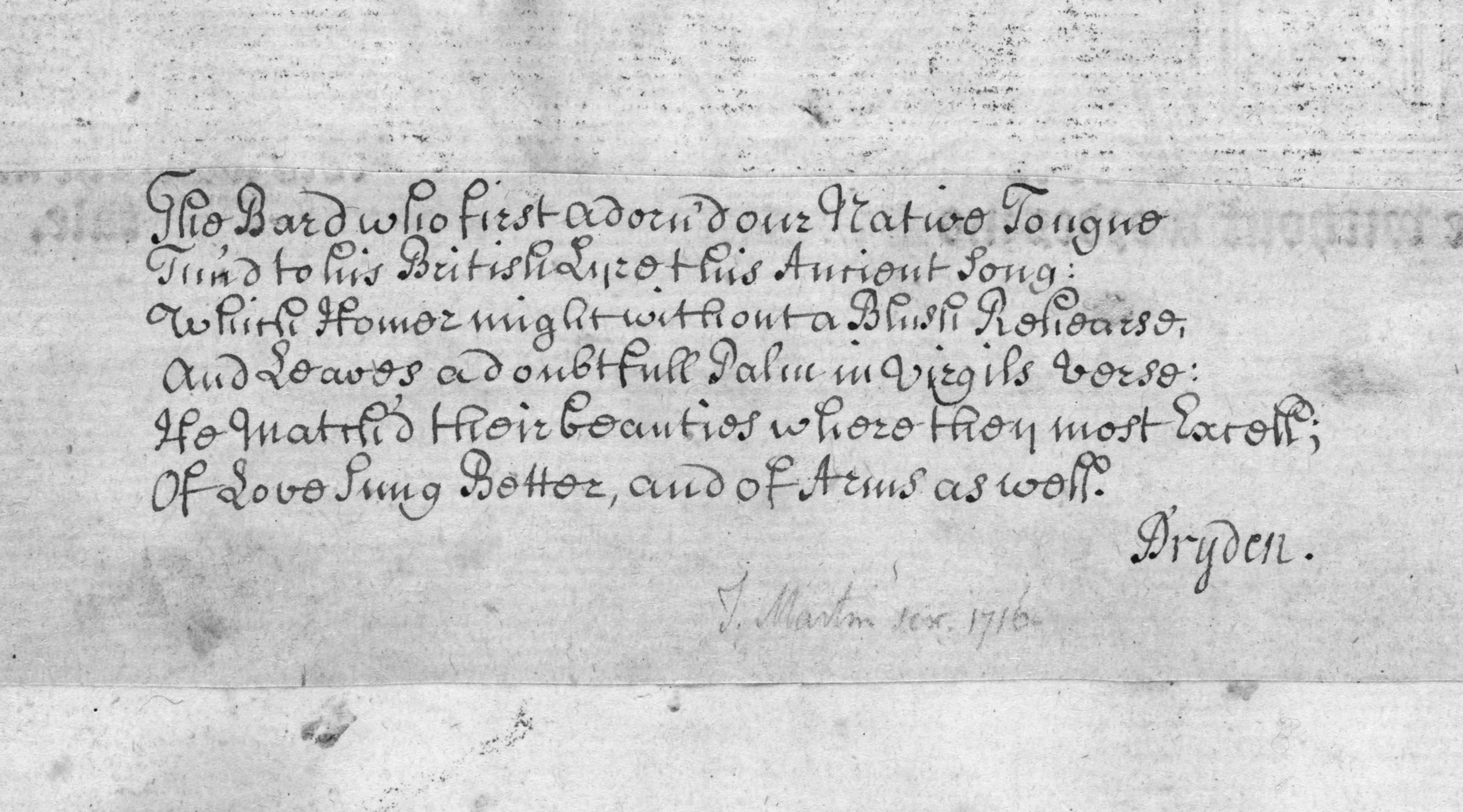
FIGURE 4. Title page verso, Stow's Workes (STC 5075, 1561). Reproduced by kind permission of the Syndics of Cambridge University Library (Keynes S.7.9).
In Martin's case, memorial verses in one hand appear in more than one copy, compared to multiple hands contributing lines on the same leaf in a given book. An acephalous copy of the ca. 1550 edition at the State Library of South Australia (SLSA) bears witness to two passages of English poetry in one hand with a version of Brigham's epitaph in a different hand at the bottom of the page (figure 5). The English lines, while conventional in sentiment, are not immediately identifiable in the collections of Chaucer allusions catalogued by Caroline Spurgeon or more recently by Jackson Campbell Boswell and Sylvia Wallace Holton.17

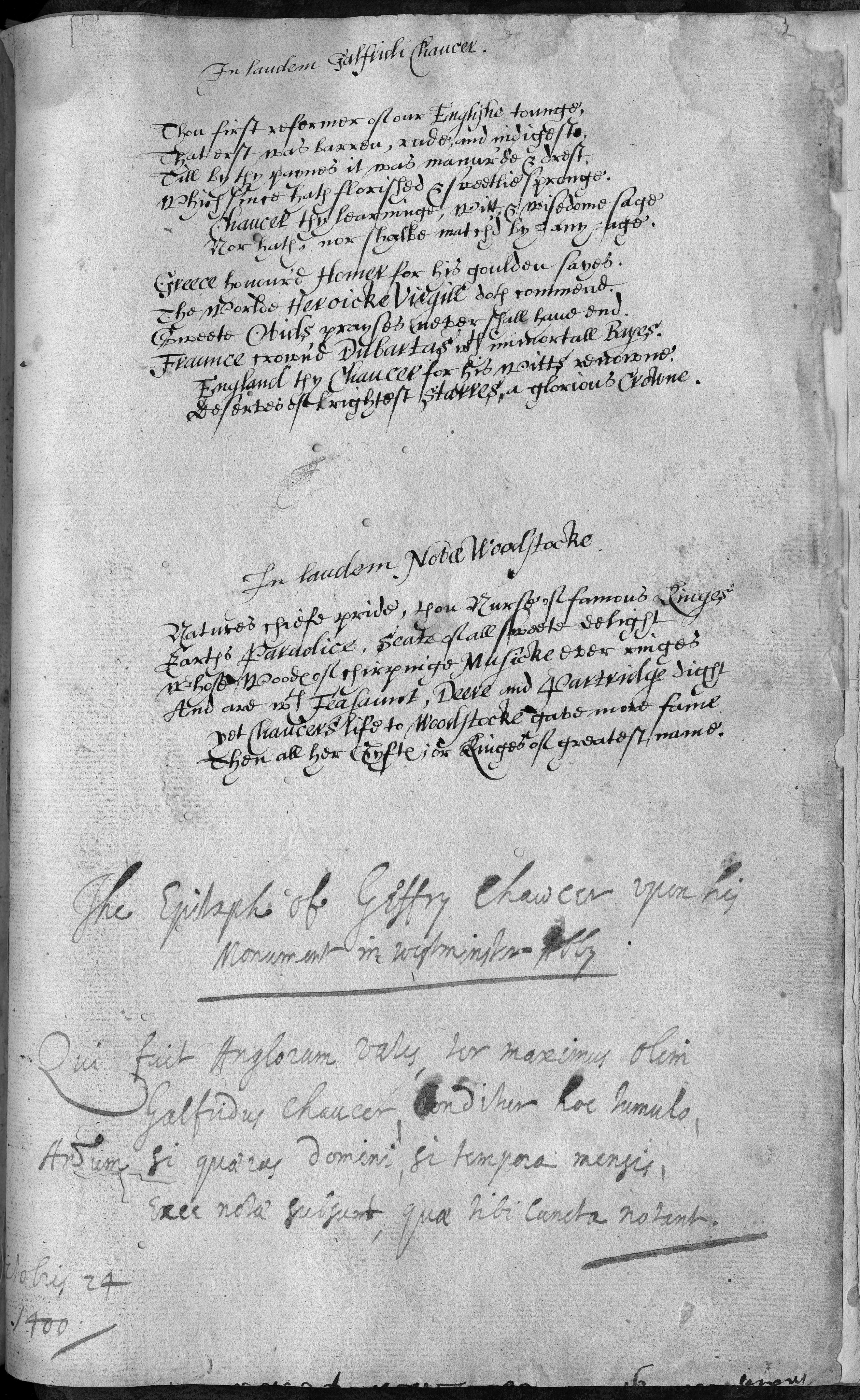
FIGURE 5. Last original fly leaf recto, Thynne's third edition (STC 5072?, ca. 1550). The State Library of South Australia (RBR 821.C496b).

The passages compare Chaucer to Virgil, Ovid, and the French poet Guillaume de Saluste, seigneur du Bartas (1544–90), and extend Chaucer's fame to a residence in Woodstock, Oxfordshire that antiquarians associated with his family:
Thou first reformer of our Englishe tounge,
That erst was barren, rude, and indigeste,
Till by thy paynes it was manur'de & drest,
Which since hath florished & sweetlie spronge.
Chaucer thy learninge, witt, & wisedome sage
Nor hath, nor shalbe match'd by any age.
Greece honour'd Homer for his goulden sayes.
The Worlde Heroicke Virgill doth commend.
Sweete Ovids prayses never shall haue end.
Fraunce crown'd Dubartas with immortall Bayes.
England thy Chaucer for his witts renowne,
Deserves of brightest, starres, a glorious Crowne.
In laudem Novæ Woodstocke.
Natures chiefe pride, thou Nurse of famous Kinges,
Earths Paradice, seate of all sweete delight
Whose Woodes of chirpinge Musicke ever ringes
And are with Feasaunt, Deere and Partridge dight
yet Chaucers life to Woodstocke gave more fame
Then all her Gyftes; or Kinges of greatest name.
The allusion to Guillaume de Saluste, seigneur du Bartas (1544–90) provides a context for dating the verses: Joshua Sylvester's English translation of La Semaine was printed in 1592, 1605, 1608, 1611, 1613, and 1641.18 Spurgeon observes that writers habitually referred to Chaucer as the "first and greatest of English poets" in the first 150 years after his death, and comparisons between Chaucer and other poets "are so very common" that they go without count.19 Chaucer's association with Woodstock remained a topic of active interest through the eighteenth century, though the family's residence in Oxfordshire (if true) dates after Chaucer's lifetime.20 The poetry wobbles perhaps when comparing the enriching effect of Chaucer's writing to manure, though the agricultural metaphor is a familiar trope, and the claim that Woodstock derives greater fame from Chaucer than from English kings goes a little too far in its exuberant enthusiasm. The lines are in keeping with sentiments expressed in previously catalogued Chauceriana,

The Westminster Abbey epitaph appears in a different hand on the bottom of the same leaf:
Monument in Westminstr Abby
Qui fuit Anglorum vates, ter maximus olim
Galfridus Chaucer, Conditur hoc tumulo,
Annum si quæras domini, si tempora mensis,
Ecce notæ subsunt, quæ tibi cuncta notent. /
[O]ctobris 24
1400 ·/
The last word of line three is "mortis" (death) in most versions, except those that follow Speght's reading, "vitæ" (life); here, the annotator of the SLSA copy departs from both established readings with "mensis" (month) instead. Exchanging "mortis" for "mensis" means that line three begins and ends with measures of calendar time, "annum" (year) and "mensis" (month). It might be an accidental variant introduced through eye-skip from the date which appears at the end of the epitaph. Dane's table of variants seems to support the premise that readers may have followed flawed exemplars and contributed scribal errors of their own in the process of copying the memorial verses.
At least one more instance of a memorial dedication deserves note, this time in an association copy of Speght's 1602 edition that belonged to Robert and Elizabeth Barrett Browning (figure 6).21 She was a well-established poet before their marriage in 1846, and she participated in another attempted revival of Chaucer's English in 1841 edited by Richard Horne, The Poems of Geoffrey Chaucer, Modernized. 22 Her pencil markings in the 1602 edition show how she counted out the meter of Chaucer's Anelide and Arcite while composing Queen Annelida and False Arcite, her contribution for the collection. In an essay published the following year, in 1842, she makes her esteem for Chaucer's place in literary history clear: "the metaphors of dawn and spring doubly become him. A morning star, a lark's exultation, cannot usher in a glory better."23 Some years after her death in 1861, Robert Browning took the 1602 Chaucer with him during an annual vacation to France in 1872, while he was chiefly focused on Greek literature.24 Browning


FIGURE 6. Speght's second edition (STC 5080, 1602). Courtesy of Armstrong Browning Library, Baylor University (X BL 821.17 C496w).
The examples of the NYPL 1561 edition, the Pembroke College Cambridge 1561 edition, Martin's 1542 edition, and the Brownings' 1602 edition thus capture ways in which book owners paid homage to Chaucer with memorial inscriptions that may or may not include the Latin epitaph. They also suggest that a search of additional copies almost certainly will reveal further instances of such tributes.
Commemorative efforts extend beyond copying written epitaphs into readers' books: interest in the heraldic insignia associated with Chaucer likewise appears in early printed copies.26 Sir John Mason (ca. 1503–66) draws Chaucer's arms at the end of the Canterbury Tales in his copy of the 1532 edition (figure 7). Beside the sketch, Mason notes in an italic hand that "This coat pertaineth to Gefery Chaucer Esqire the Author of this Booke./ whoc was in Rychard the second tyme ./" He documents the colors assigned to the author: "party per pale argent and guiles, a bend counterchanged."27 The chivalric imagery and

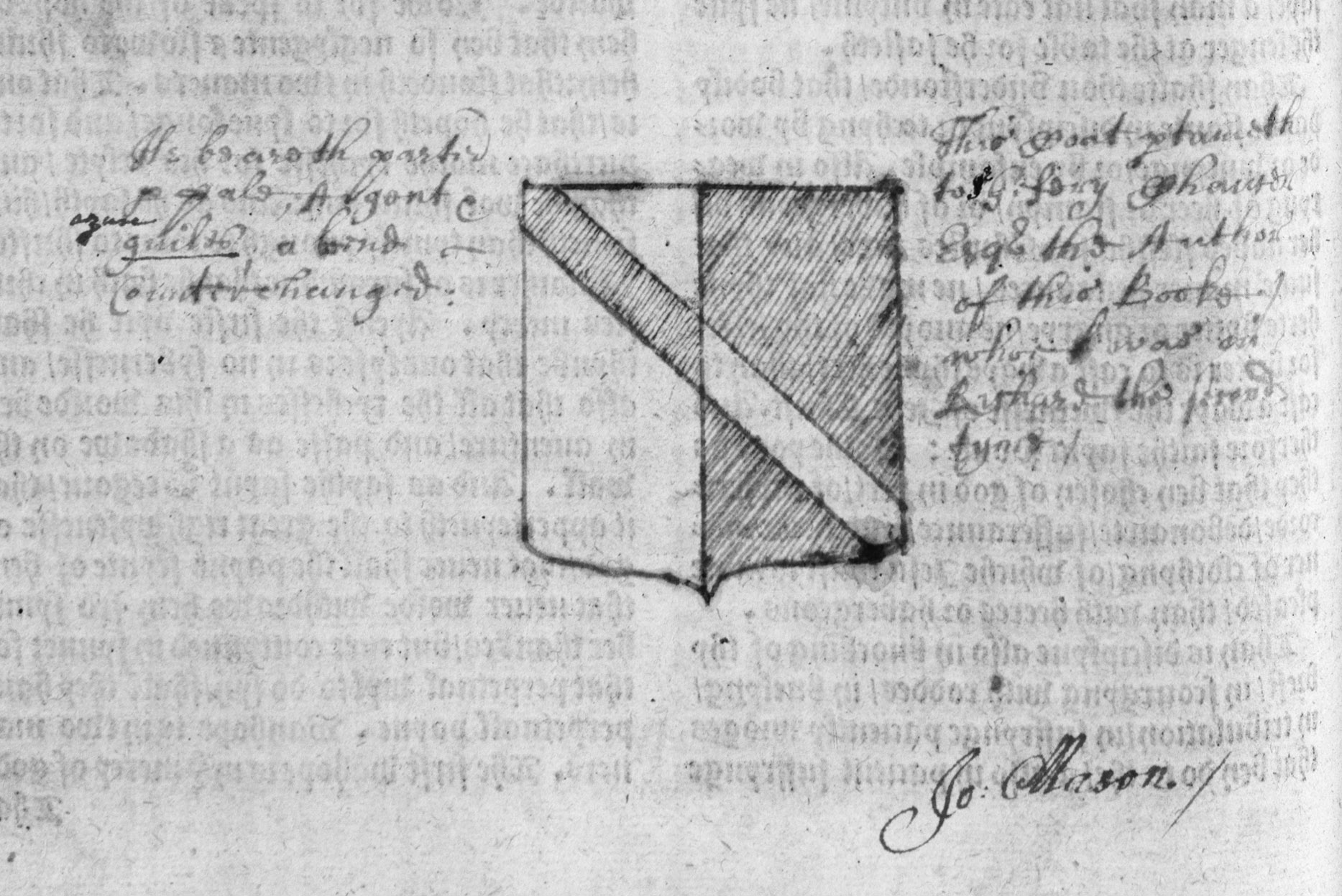
FIGURE 7. Sig. Z6v, Thynne's first edition (STC 5068, 1532). By permission of the Master and Fellows of Trinity College, Cambridge (VI.3.13).
Several book owners embellished the black-and-white cut to display the red-and-white colors assigned to him. One example can be found in a copy of the 1561 Chaucer at the Harry Ransom Center with red shading for the shield and gold highlights with a yellow pencil (PR 1850 1561b, copy 2).

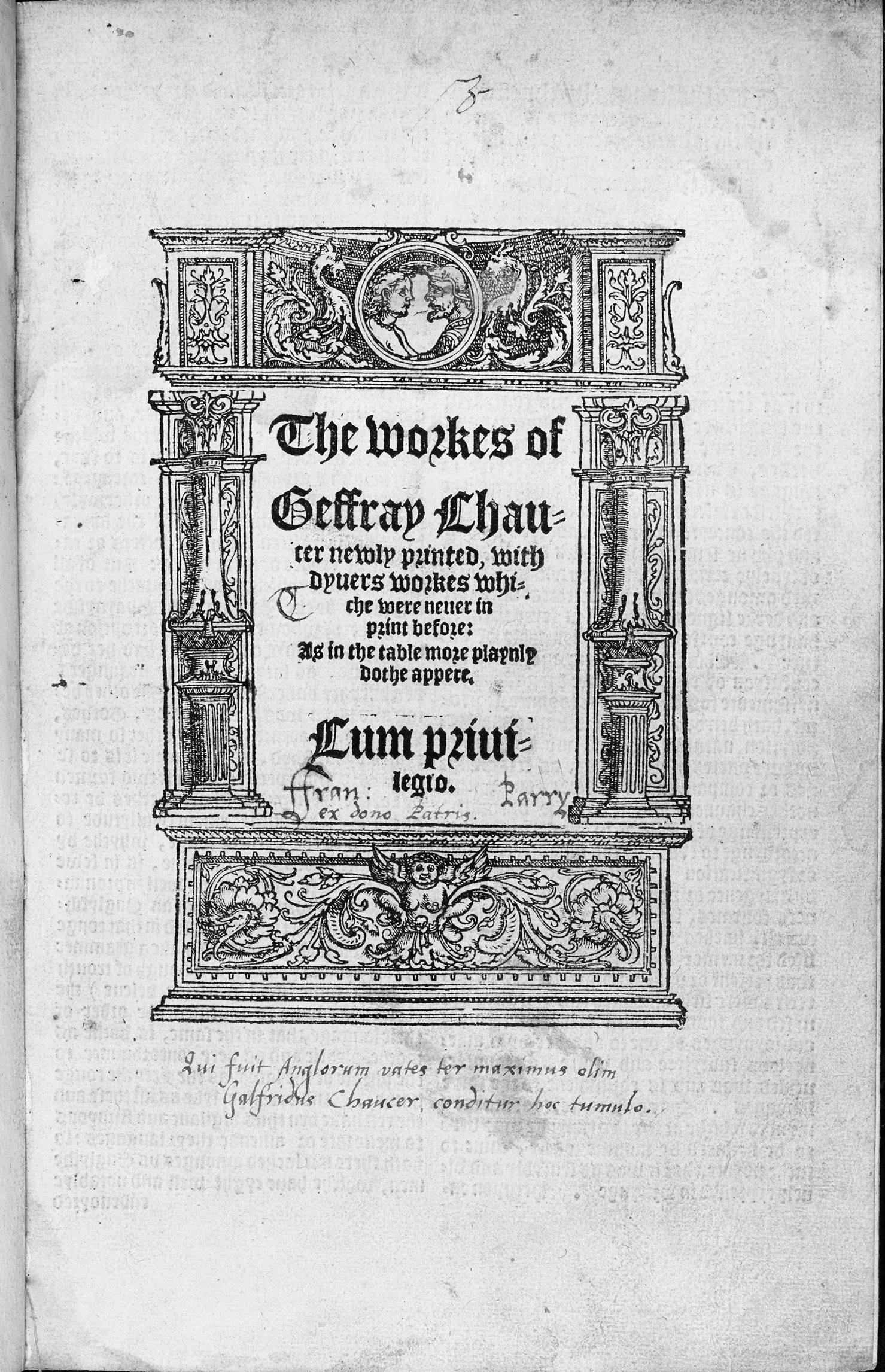
FIGURE 8. Title page, Thynne's third edition. John Rylands Library, Copyright of The University of Manchester (21316).

The owner of a 1598 copy also at the Harry Ransom Center uses a red wash to accent the shaded portions of the shield (PR1850 1598b, copy 2). At the York Minster Library, hand-tinted fragments of the Speed portrait have been preserved (XIVI.9). A copy of the 1602 edition in Trinity College, Cambridge is illuminated in opaque tints, with the unicorn's horn and mane in yellow; red for shaded portions of the drawing, and blue for the helmet and the couplet border (Munby A.2). The shield is also decorated by hand in another copy of the 1602 edition at the Lilly Library at Indiana University in Bloomington (PR 1850 1602). These examples are visual rather than verbal in nature, yet they appear consistent with the commemorative intentions of readers who inscribed memorial verses in their copies of Chaucer's writing.
Seth Lerer, Chaucer and His Readers: Imagining the Author in Late-Medieval England (Princeton: Princeton Univ. Press, 1993), 147–175; repr. in Writing After Chaucer: Essential Readings in Chaucer and the Fifteenth Century, ed. Daniel J. Pinti (New York and London: Garland, 1998), 243–279. For the seminal psychoanalytic essay on "Father Chaucer" and expressions of fifteenth-century anxiety about living up to his literary standards, see A. C. Spearing, Medieval to Renaissance in English Poetry (Cambridge: Cambridge Univ. Press, 1985), 88–110; repr. in Writing After Chaucer, ed. Pinti, 145–166.
James P. Carley, "Brigham, Nicholas (d. 1558)," Oxford Dictionary of National Biography (Oxford Univ. Press, 2004; online ed., Jan. 2008), http://www.oxforddnb.com/view/ article/3414.
Regarding public memorial gestures see Thomas Prendergast, Chaucer's Dead Body: From Corpse to Corpus (New York: Routledge, 2003).
See Joseph A. Dane, Who is Buried in Chaucer's Tomb? Studies in the Reception of Chaucer's Book (East Lansing, MI: Michigan State Univ. Press, 1998), 11–32, where he notes that the Latin epitaph circulated "in several overlapping traditions: in Chaucer editions and biographies, in written surveys of physical antiquities, and in engravings found in these and other works" (17).
Joseph A. Dane and Alexandra Gillespie, "Back at Chaucer's Tomb – Inscriptions in Two Early Copies of Chaucer's Workes," Studies in Bibliography 52 (1999): 89–96.
Wiggins, "What Did Renaissance Readers Write?," 17–20; Arnold Sanders, "Writing Fame: Epitaph Transcriptions in Renaissance Chaucer Editions and the Construction of Chaucer's Poetic Reputation," Journal of the Early Book Society 14 (2011): 145–178.
For more on Speght's title pages, see Tim William Machan, "Speght's 'Works' and the Invention of Chaucer," Text 8 (1995): 145–170.
William Camden, Britain, or A chorographicall description [...], trans. Philemon Holland (London: George Bishop and John Norton, 1610), STC 4509, at page 376.
David Stoker, "Martin, Thomas (1697–1771)," Oxford Dictionary of National Biography (Oxford Univ. Press, 2004; online ed.), http://www.oxforddnb.com/view/article/18212.
See Richard L. Greaves, "'Wotton, Anthony (bap. 1561?, d. 1626)," Oxford Dictionary of National Biography (Oxford Univ. Press, 2004; online ed.), http://www.oxforddnb.com/view/ article/29997, regarding Anthony Wotton, an accomplished divinity scholar and Protestant pamphleteer; Greaves mentions that his eldest surviving son, Samuel, became a religious pamphleteer as well.
Horace, Ars Poetica, trans. Christopher Smart (1756), repr. in American Academy of Poets, http://www.poets.org/viewmedia.php/prmMID/19921.
For a discussion of the contemporary dissention regarding Dryden's translation and his burial place near Chaucer's memorial, see Prendergast, Chaucer's Dead Body, 57–69.
William L. Alderson, "A Check-List of Supplements to Spurgeon's Chaucer Allusions," Philological Quarterly 32 (1953): 418–427; Boswell and Holton, Chaucer's Fame; Jackson Campbell Boswell and Sylvia Wallace Horton, "References to Chaucer's Literary Reputation," Chaucer Review 31 (1997): 291–316; Thornton S. Graves, "Some Chaucer Allusions (1561–1700)," Studies in Philosophy 20 (1923): 469–478; Spurgeon, Five Hundred Tears. For allusions in English verse comparing Chaucer with Homer, Virgil, and/or Ovid, see Boswell and Holton, Chaucer's Fame in England, nos. 191, 222, 321, 373, 411, 452, 564, 600, 672, 1020, 1021, 1119; for references to Du Bartas, in poetry or in prose, see nos. 558, 600, 672, 696, 724, 838, 1021, 1104.
E. G. Stanley, "Chaucer at Woodstock: A Theme in English Verse of the Eighteenth Century," Review of English Studies, n.s. 48 (1997): 157–167.
Marjorie Stone, "Browning, Elizabeth Barrett (1806–1861)," Oxford Dictionary of National Biography (Oxford Univ. Press, 2004; online ed., Oct. 2008), http://www.oxforddnb.com/view/article/37ii.
The Poems of Geoffrey Chaucer, Modernized, ed. R. H. Horne (London: Whittaker & Co., 1841), 235–257.
Its original publication in the Atheneum was part of a review for The Book of the Poets: Chaucer to Beattie (London: Scott, Webster, & Geary, 1842). It was reprinted posthumously in a collection of her prose writings, Essays on the Greek Christian Poets and the English Poets (New York: James Miller, 1863), and the Chaucer Society also published it in 1874 as part of their second series, Essays on Chaucer, His Words and Works, Part II, no. 5, 157–164. For a modern reprint, see "Mrs. Browning on Chaucer," in Bloom's Classical Critical Views: Geoffrey Chaucer, ed. Michael G. Cornelius (New York: Infobase, 2008), 164–171.
Clyde de L. Ryals, "Browning, Robert (1812–1889)," Oxford Dictionary of National Biography (Oxford Univ. Press, 2004; online ed., May 2006), http://www.oxforddnb.com/view/ article/3714.
Euripides, Rhesus, lines 535–538, transcribed from vol. 2 of Tragoediae. ed. Augustus Witzschel, 4 vols. (Tauchnitz: Leipzig, 1841). Many thanks to Melinda J. Creech for identifying a copy of this edition in Browning's traveling library. Translation from private correspondence of Robert K. Root to "Mr. Fletcher" on Princeton University letterhead, May 9, 1925. The letter is in the Armstrong Browning Library; the curators have no further information about the identity of "Mr. Fletcher."
See Martha W. Driver, "Mapping Chaucer: John Speed and the Later Portraits," Chaucer Review 36 (2002): 228–249, for a discussion of the heraldic interests of the artist who created the Chaucer portrait in the Speght editions.
Other owners took notice of Chaucer's chivalric status in a copy of the 1542 edition at the Cambridge University Library, inserting "Geoffry Chaucer knight" in manuscript on the title page (Sel.2.2), and in a copy of the 1561 edition at the British Library adding "Sir" above the printed name "Geffrey" and "knyght" after it (83.l.5).
Speght's 1598 edition also features verses dedicated to Chaucer's fame at the crown of the title page border for STC 5078 and 5079 (though not STC 5077): "CHAVCER. | Out of the old fields, as men sayth, | Commeth all this new corn, fro yere to yere: | And out of old books, in good fayth, | Commeth al this new science that men lere;" a lower compartment at the base of the border reads: "Ouid. | Seris venit vsus ab annis."
Customized Title Pages
Scholars have noted how the architectural borders used for early editions of Chaucer's Works bear a visual resemblance to a physical memorial. The title page of Martin's copy of the 1542 edition, crafted by Reverend Mr. Nathaniel Coddington (figure 3), is consistent with this pattern. He carefully cuts and pastes a border identified by R. B. McKerrow and F. S. Ferguson as being in use from 1551 through 1622 (no. 76).29 For Coddington, the most important information clearly is the identity of the author: "CH|AVC|ER" fills the entirety of the space available for a title, though information about the imprint can be found in manuscript at the bottom of the page: "Printed in 1542. by John Reyne at the signe of the St George | in Pauls Churchyarde." Another book owner, this time of Cambridge University Library Syn.5.53.1, a copy of the 1532 edition, combines a carefully trimmed border (McKerrow and Ferguson no. 19) with a title ascribing the book to Caxton's Westminster press (figure 9). One can hazard a fairly good guess at the owner's motivation for doing so since the cachet and resale value of a Caxton would be higher than that of the book with its original 1532 title page.
A provenance note by Samuel Sandars addresses the state of the title page:
A different principle seems to be at work in a copy of the 1542 edition at the Harry Ransom Center, which makes use of a printed border (McKerrow and Ferguson no. 20). A slip written by hand in a manner emulating the black-letter typeface is pasted over the original printed title. The title page for the Romaunt of the Rose, meanwhile, keeps the printed text of the title, accented with fleurons, but discards the rest of the original design (figure 10). Further examination of the book reveals that the owner covers existing marginalia with slips of blank paper pasted in. Since title pages tend to attract ownership inscriptions and pen trials, this particular owner may have decided that the cleanest solution would be to start anew in the case of the Works title page, and to paste the title from the Romaunt of the Rose on a clean page.30


FIGURE 9. Title page advertising Thynne's 1532 edition as a Caxton. Reproduced by kind permission of the Syndics of Cambridge University Library (Syn. 5.53.1).

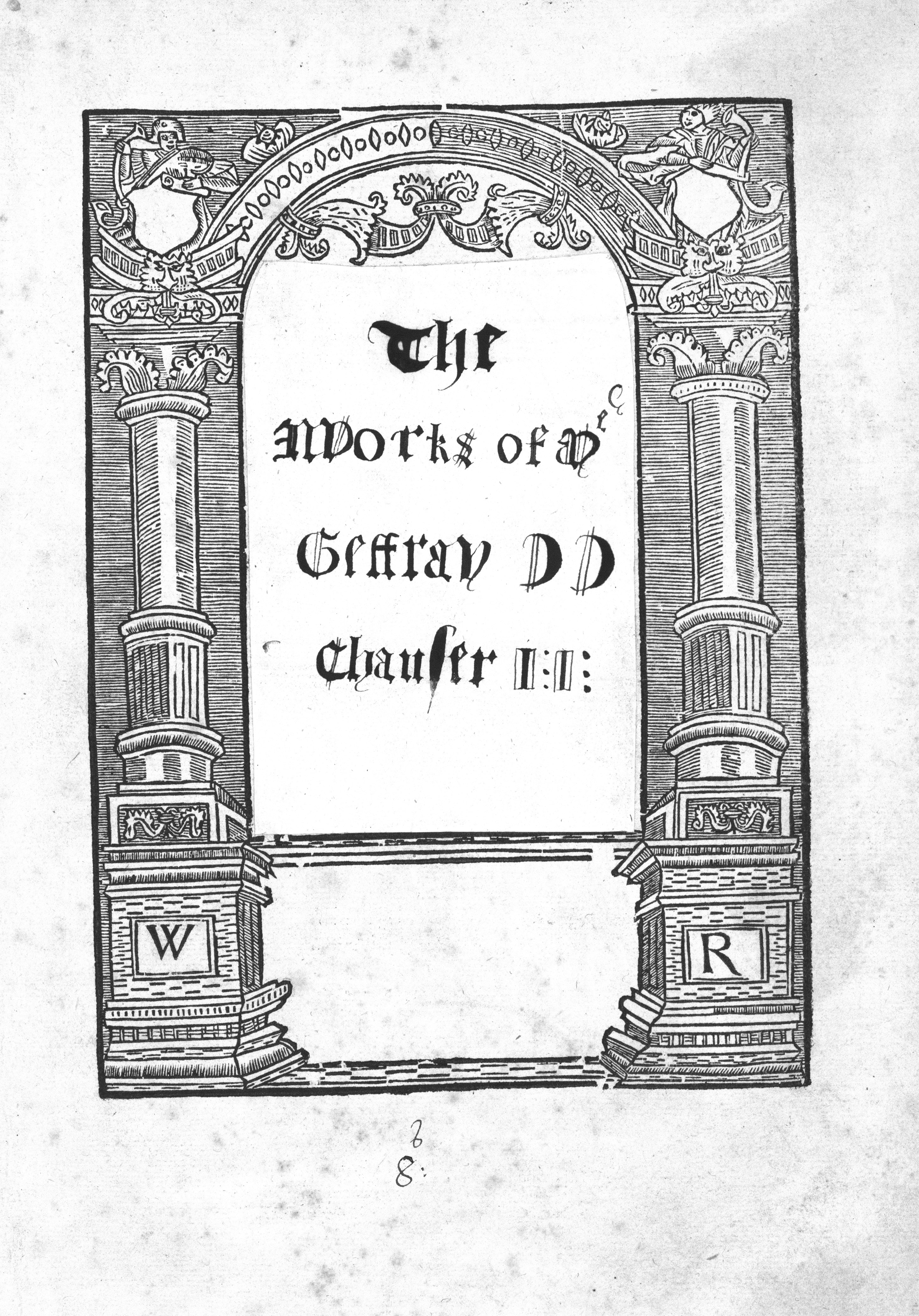
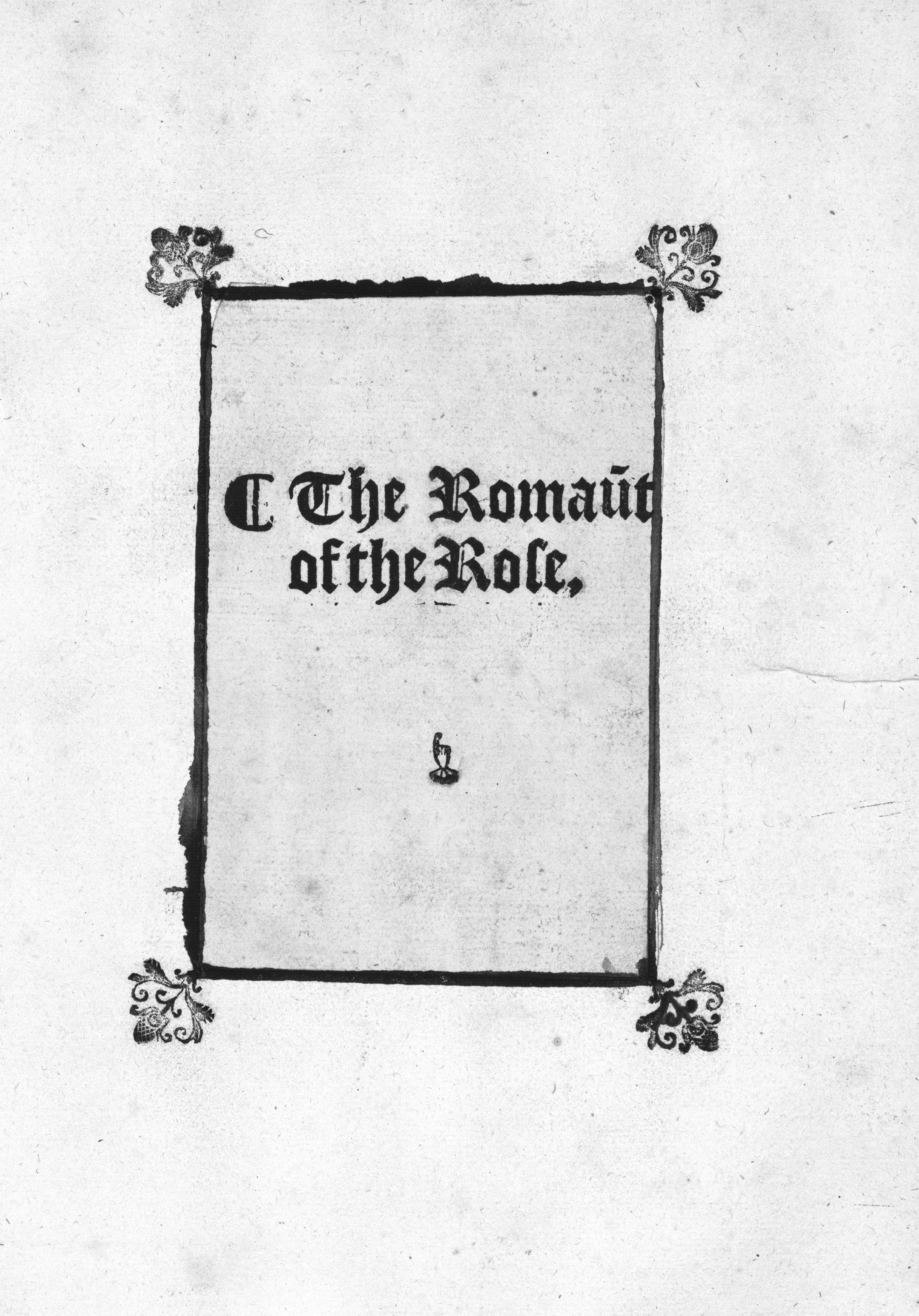
FIGURE 10. Customized title pages in a copy of Thynne's 1542 edition. Harry Ransom Center, The University of Texas at Austin (PR 1850 1542b copy 4).

These self-fashioned title pages make use of printed elements, but an artistic owner of Thynne's ca. 1550 edition at Wesleyan University Library supplied his or her copy with a title page by drawing a facsimile of the Speght title page (figure 11). Was the 1598 title page used as a model damaged as well? An irregular patch of text is missing, but with penciled ruling to connect words that originally appeared on the same line, on either side of the break. The same or another reader completes partially formed words in pencil and supplies omitted text. It also serves to correct the artist's textual errors, e.g., Figture should read Portraiture in item one; AutPrs should read Authors in item five; and London is instead Londini on the Speght title page. Overall, however, the visual aspect of the page is striking in its rendering of the architectural borders. Capturing the visual grandeur of the page demonstrates the foremost importance to this artist of design rather than words, which are dominant in the other examples. Owners of the books at the British Library (figure 3), the Cambridge University Library (figure 9), the Harry Ransom Center (figure 10), and the Wesleyan University Library (figure 11) thus show a variety of inventive strategies for supplying a title page that was wanting or restoring an imperfect leaf to serve as a more suitable entryway for subsequent readers of the text.
The architectural borders of the title page sometimes inspired book owners to affix their own armorial bookplate at the foot of the title page. In a copy at the Cambridge University Library, the bookplate of the Peterborough Cathedral becomes an extension of the architectural border, intentionally integrating it with the printed page (figure 12). Another example of this approach appears in a copy of Thynne's ca. 1550 edition at Trinity College Dublin (V dd 16). The armorial bookplate of Theophilus Butler, esq. which features his motto, "Liberté tout entiere," does indeed take some liberties with the title page design with the addition of his engraved plate. These two examples are making additions not in order to supply wanting material but rather to augment the title page with an ornate symbol of the owner's identity near the marquee billing of Chaucer as author.
R. B. McKerrow and F. S. Ferguson, Title-page Borders used in England & Scotland 1485–1640 (London: Oxford Univ. Press for the Bibliographical Society, 1932).
Frontispiece Portraits
Portraits of the author also confer authority, and they sometimes were inserted to serve as a frontispiece in a copy printed without one (see table 2). Adding a portrait equals or exceeds in frequency the occasions where owners inscribed the tomb verses in copies printed without it. Thomas Speght's 1598 edition provides for the first time an engraved portrait of the author by John Speed. That printed image indicates that the artist used a Hoccleve manuscript as his model. Nicholas Perkins finds ample evidence that readers plundered Chaucer portraits from an early point in the transmission history of Hoccleve's De Regimine Principum, a mirror for princes completed ca. 1411, with the outcome that only one manuscript retains the Chaucer portrait, making it possible that Speght is referring to one of these lost images in his 1598 edition.31

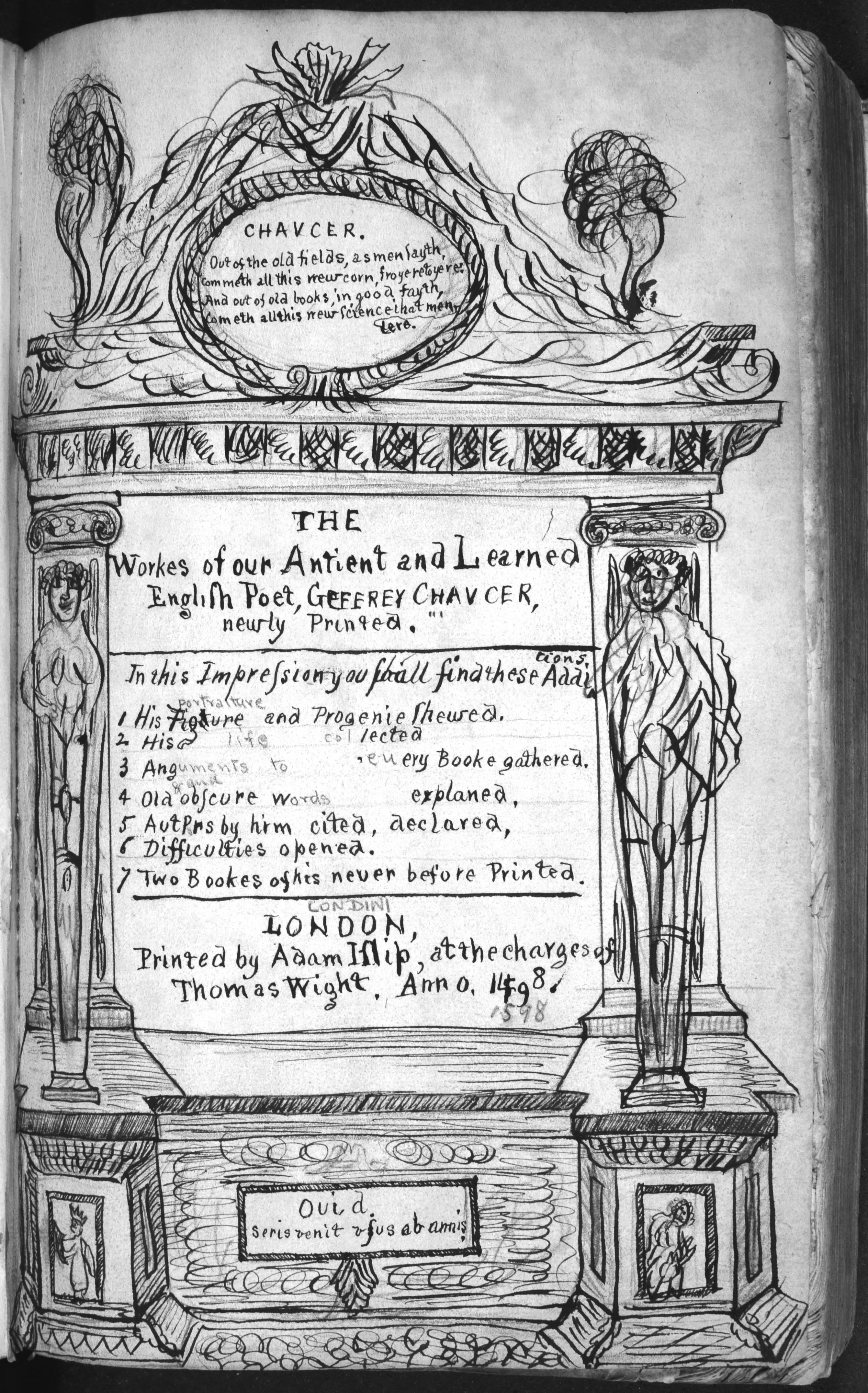
FIGURE 11. Hand-drawn facsimile of Speght title page for a copy of Thynne's ca. 1550 edition. By permission of Wesleyan University Library, Special Collections & Archives (YX C4 1551).

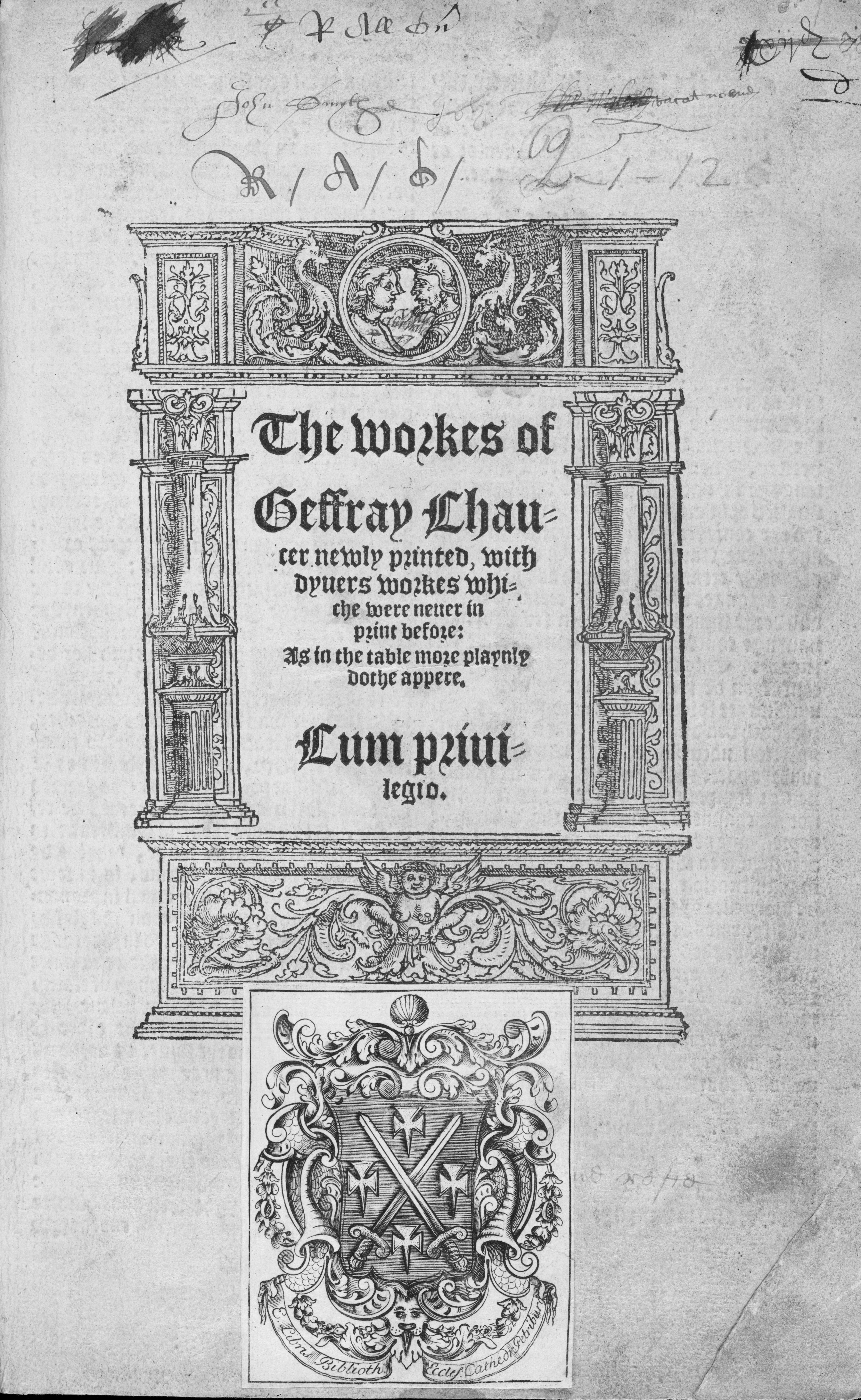
FIGURE 12. Title page for Thynne's ca. 1550 edition with bookplate of Peterborough Cathedral. Reproduced by kind permission of the Syndics of Cambridge University Library (Pet. B.6.13).

| Edition Year | Location | Portrait |
| ca. 1477 | British Library (167.c.26), Canterbury Tales | s. xviii color portrait |
| 1532 | Oxford, Bodleian Library (Douce C. Subt. 19) | Hand-drawn facsimile of Hoccleve portrait (front board); Collyer engraving, 1774 (rear board) |
| ca. 1536 | Huntington Library (51789), Fack Upland | Collyer engraving, 1774 |
| 1542 | Columbia (Phoenix PO17.En1 B64 1542C). | s. xix color portrait |
| 1561 | Cambridge University Library (Keynes S.7.9) | Plate from Speght edition |
| 1561 | Huntington Library (84667) | Plate from Speght edition |
| 1561 | Texas, Harry Ransom Center (PR 1850 1561b, copy 4) | Thurston engraving, 1820 |
| 1561 | New York Public Library (*KC + 1561) | Plate from Speght edition |
| 1598 | Oxford, Bodleian Library (Ms Rawl. Poet 41) | Anon. sxvii printed stamp |
| 1602 | Baylor, Armstrong Browning Library (X BL 821.17 C496w) | Houbraken engraving, 1741 |
| 1602 | British Library (641.m.2) | Vertue portrait [n.d.] |
| 1602 | Texas, Harry Ransom Center (PR 1850 1602b) | Engraving for Baldwin, 1753 |
| 1602 | Harvard, Houghton Library (STC 5081) | s. xviii portrait |
| 1602 | Trinity College, Cambridge (Munby A. 2) | Hand-drawn facsimile of Speed portrait, in brown ink |
| 1602 | University of Virginia (PR1850 1602 copy 1) | Engraving for Harrison, 1785 |
Martha Driver argues, however, that Speed probably based his work on British Library MS Additional 5141 or a similar full-length depiction of Chaucer holding his penner and a rosary given how similar the styling is between the printed engraving and the painted image.32 She concurs with Derek Pearsall that this single leaf might be the Cotton portrait referred to by the eighteenth-century engraver George Vertue if someone liberated it from Cotton Otho A. XVIII before the manuscript perished in the fire of 1731.33 Some years after Vertue's engraving, dated 1717, Jacobus Hou-

Collectors of Chaucer's early printed editions added copies of half-body portraits to their Chaucer editions, pilfered from a variety of sources. The Houbraken portrait serves as a frontispiece for the Browning Chaucer. Another engraving of Chaucer's bust, printed for Robert Baldwin and the London Magazine in 1753, appears on the verso of a fly leaf in a Bishop imprint of the 1602 edition.37 An even later engraving by John Thurston (1820) can be found in a copy of the 1561 edition at the HRC. A copy of the 1532 edition once owned by Francis Douce (1757-1834) frames the body of the text with images of Chaucer on both the front and the rear pastedowns, opening with a tracing of the Hoccleve miniature and concluding with John Collyer's 1776 engraving.38 A copy of Speght's first edition contains at the start of the author's biography a small portrait that appears to be clipped from the title page to Edward Phillips' Moderne World of Words.39 In one case where the Speed portrait was wanting in a 1602 edition at Trinity College, Cambridge, the owner added a hand-drawn facsimile to serve in place of the engraved portrait (figure 13). Collectors might add extra portraits to copies of Speght's edition, even if the Speed portrait remained intact. Now did book owners have any qualms about robbing Peter to pay Paul by taking copies of the Speed portrait for use in earlier editions: a copy of John Stow's 1561 edition at the Cambridge University Library, for instance, contains a copy of the Speed portrait (Keynes S.7.9).

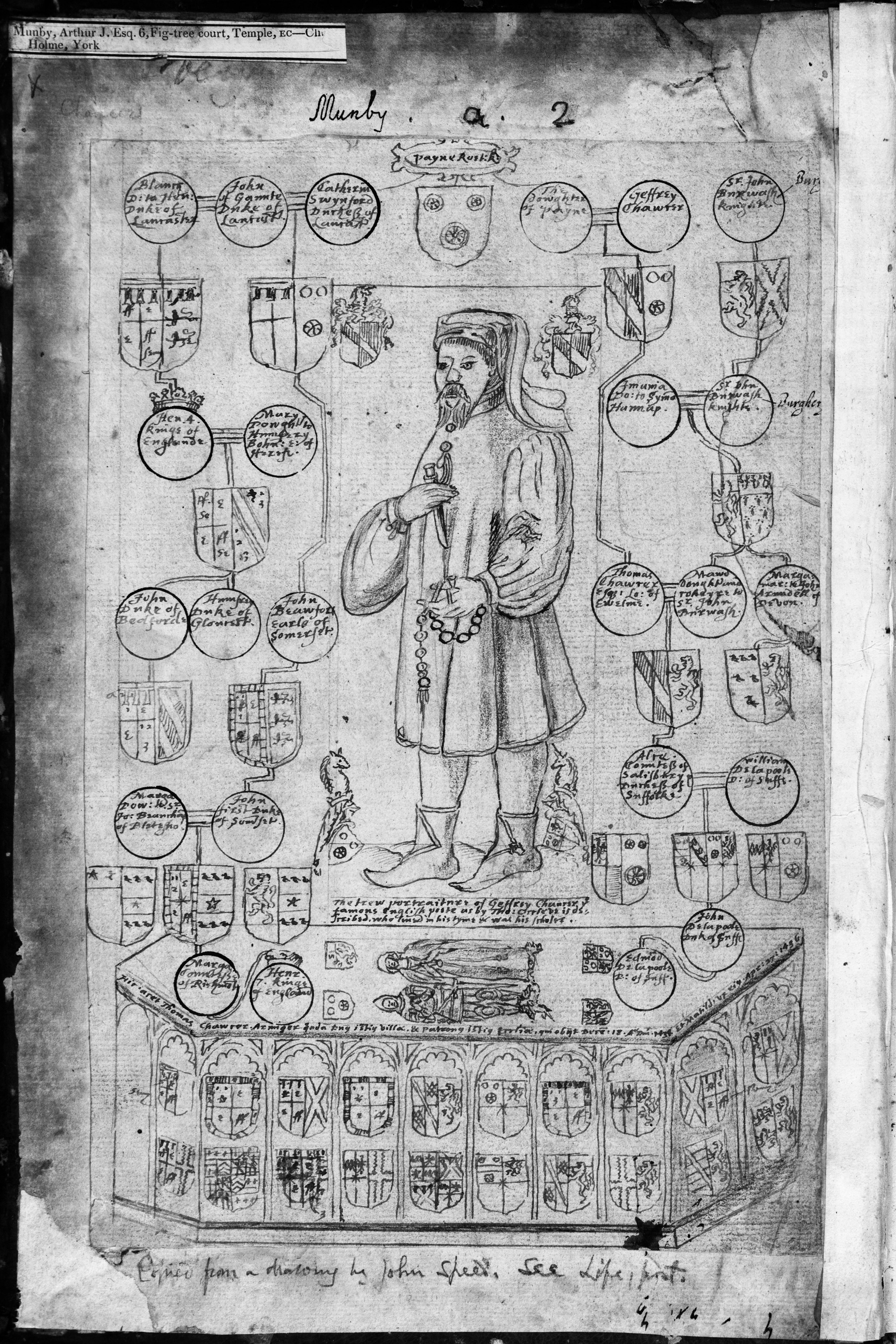
FIGURE 13. Hand-drawn facsimile of Speed portrait for Speght's 1602 edition. By permission of the Master and Fellows of Trinity College, Cambridge (Munby A.2).

The circulation of these portraits merits further exploration, but this collection of examples seems to indicate that Chaucer's visual presence added iconographic worth to books commemorating not just his literary skill but his perceived cultural importance.
The ways in which owners of early editions of Chaucer altered their books represent forms of reception that have yet to be considered fully. These readers did more than mark passages with marginalia; through their choice of inscriptions, title-page embellishments, and inserted portraits they sought to provide an overall characterization of the books and their author. These elements, intended as commemorative and meant to be seen and appreciated by others, offer additional ways in which the physical features of books can prompt fresh insights into the cultural perceptions and values of past ages.40

At the British Library, a copy of the Canterbury Tales appears to use text clipped from a running title to supply a title page (BL G.11587).
The extant copy is British Library MS Harley 4866, fol. 88. See Nicholas Perkins, Hoccleve's Regiment of Princes: Counsel and Constraint (Cambridge: D.S. Brewer, 2001), 155-159. He agrees with Pearsall that Speght's claim might have been a publicity ploy, but "it is quite possible, however, that he had seen such a portrait, whether the one described by [Sir Francis] Kinaston, or in a manuscript now lost, or in Arundel 38 or Harley 4826 before they were excised" (159).
Martha W. Driver, "Mapping Chaucer: John Speed and the Later Portraits," Chaucer Review 36 (2002): 228–249 at 241.
Derek Pearsall, Life of Geoffrey Chaucer: A Critical Biography (Oxford and Cambridge, MA: Blackwell, 1992), 295.
For further information about the engraving, see British Museum Collection Database, "1979,, U.366." www.Britishmuseum.org/collection.
The Sloane portrait is now National Portrait Gallery 532; see Marion Harry Spielmann, The Portraits of Geoffrey Chaucer: An Essay Written on the Occasion of the Quincentenary of the Poet's Death (London: Chaucer Society, 1900), 12.
Betsy Bowden wryly observes that "although traditional Chaucer portraiture constitutes an extensive topic, the basic image and pose remained quite consistent," making it no surprise that "the Houghton Library portrait on wood, done by an unknown artist perhaps in the seventeenth century, stands in a long line of sweet-faced, fork-bearded Chaucers who finger pen case and rosary while gazing pensively downward." See Bowden, "Canterbury Pilgrims and Their Horses in the Eighteenth Century: Two Artists' Interpretations," Harvard Library Bulletin, n.s. 3 (1992-93): 18–34 at 32.
For the Chaucer portrait, see British Museum Collection Database, "O,7.158." Facsimiles of the complete title pages are also available in the database: Museum numbers 1872, 1012.5417 and 1895,1031.587 (London, 1696); Museum number 1896,1230.250 (London, Nathaniel Brooke, 1670).
The current project was made possible by a Harry Ransom Center Research Fellowship sponsored by the Carl H. Pforzheimer Endowment; a Bibliographical Society minor grant; the NEH summer seminars program; and funding from the Provost's Office at Baylor University.
Caroline F. E. Spurgeon, Five Hundred Years of Chaucer Criticism and Allusion 1357 –1900, 3 vols. (Cambridge: Cambridge Univ. Press, 1925); Jackson Campbell Boswell and Sylvia Wallace Holton, Chaucer's Fame in England: STC Chauceriana, 1475–1640 (New York: Modern Language Association, 2005).
Alexandra Gillespie, Print Culture and the Medieval Author: Chaucer, Lydgate, and Their Books 1473 –1557 (Oxford: Oxford Univ. Press, 2006). For other important book-length studies of Chaucer's early editions, see Editing Chaucer: The Great Tradition, ed. Paul Ruggiers (Norman, OK: Pilgrim Books, 1984) and Joseph A. Dane, Who is Buried in Chaucer's Tomb? Studies in the Reception of Chaucer's Book (East Lansing, MI: Michigan State Univ. Press, 1998).
Alison Wiggins, "What Did Renaissance Readers Write in their Printed Copies of Chaucer?" The Library, 7th ser., 9 (2008): 3–36. Numerous other articles discuss the marginalia of individual copies: see Megan Cook, "How Francis Thynne Read His Chaucer," Journal of the Early Book Society 15 (2012): 215 –244; Robert C. Evans, "Ben Jonson's Chaucer," English Literary Renaissance 19 (1989): 324–345; Antonia Harbus, "Interpreting The Wife of Bath's Prologue and Tale in a Contemporary Note to Thynne's 1532 Edition," ANQ 22 (2009): 3 –11 and "A Renaissance Reader's English Annotations to Thynne's 1532 Edition of Chaucer's Works," Review of English Studies, n.s. 59 (2007): 342–355; Seth Lerer, "Latin Annotations in a Copy of Stowe's Chaucer and the Seventeenth-Century Reception of Troilus and Criseyde," Review of English Studies, n.s. 53 (2002): 1–7; Alison Wiggins, "Frances Wolfreston's Chaucer," in Women as Scribes and the Domestication of Print Culture, ed. P. Hardman and Lawrence Mathers (Cambridge: Brewer, 2010), 77–89. See below for relevant citations and further discussion concerning reader inscriptions of Chaucer's Latin epitaph in early printed books.
|
READERS' MEMORIALS IN EARLY EDITIONS OF CHAUCER
| ||